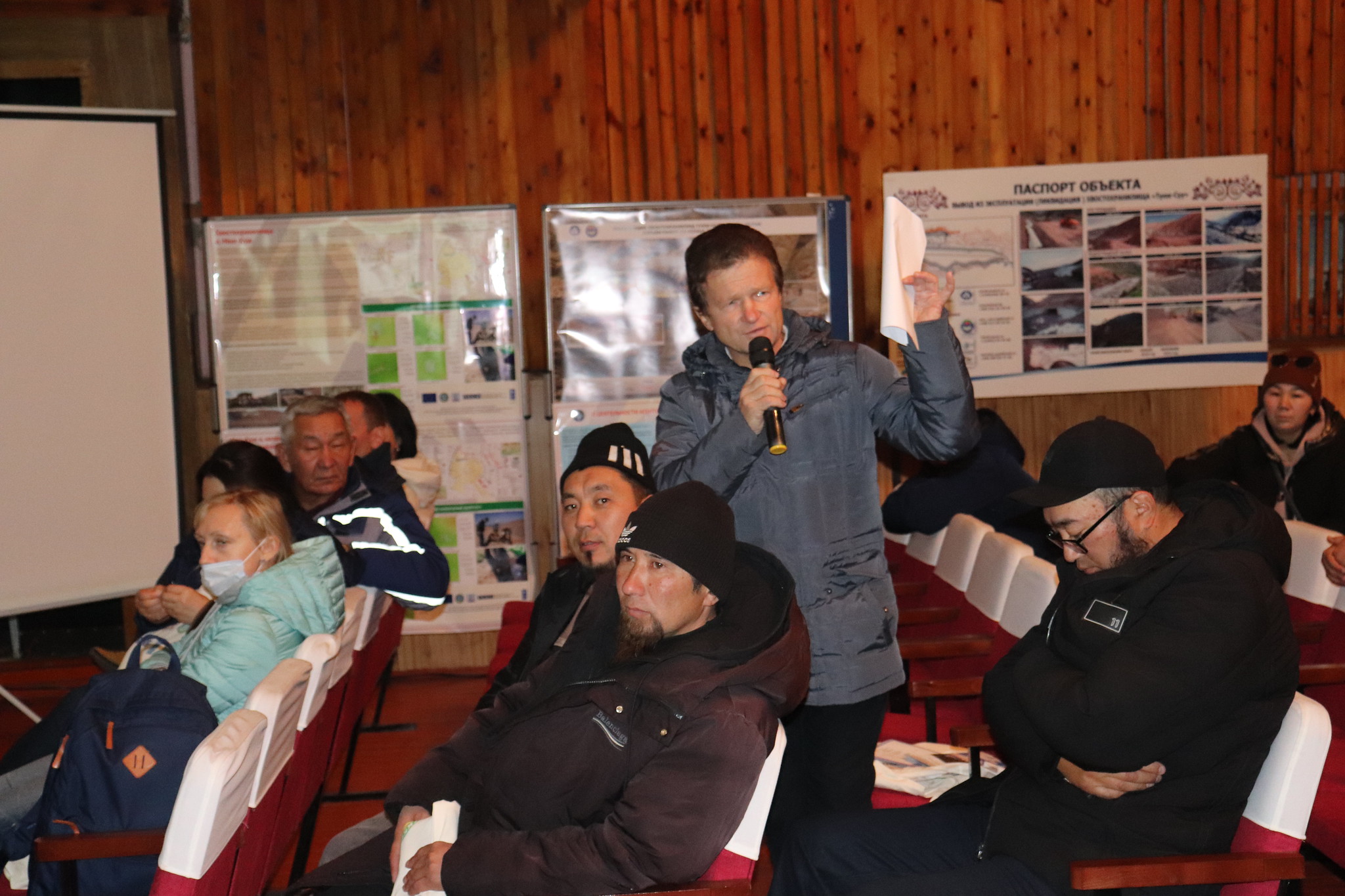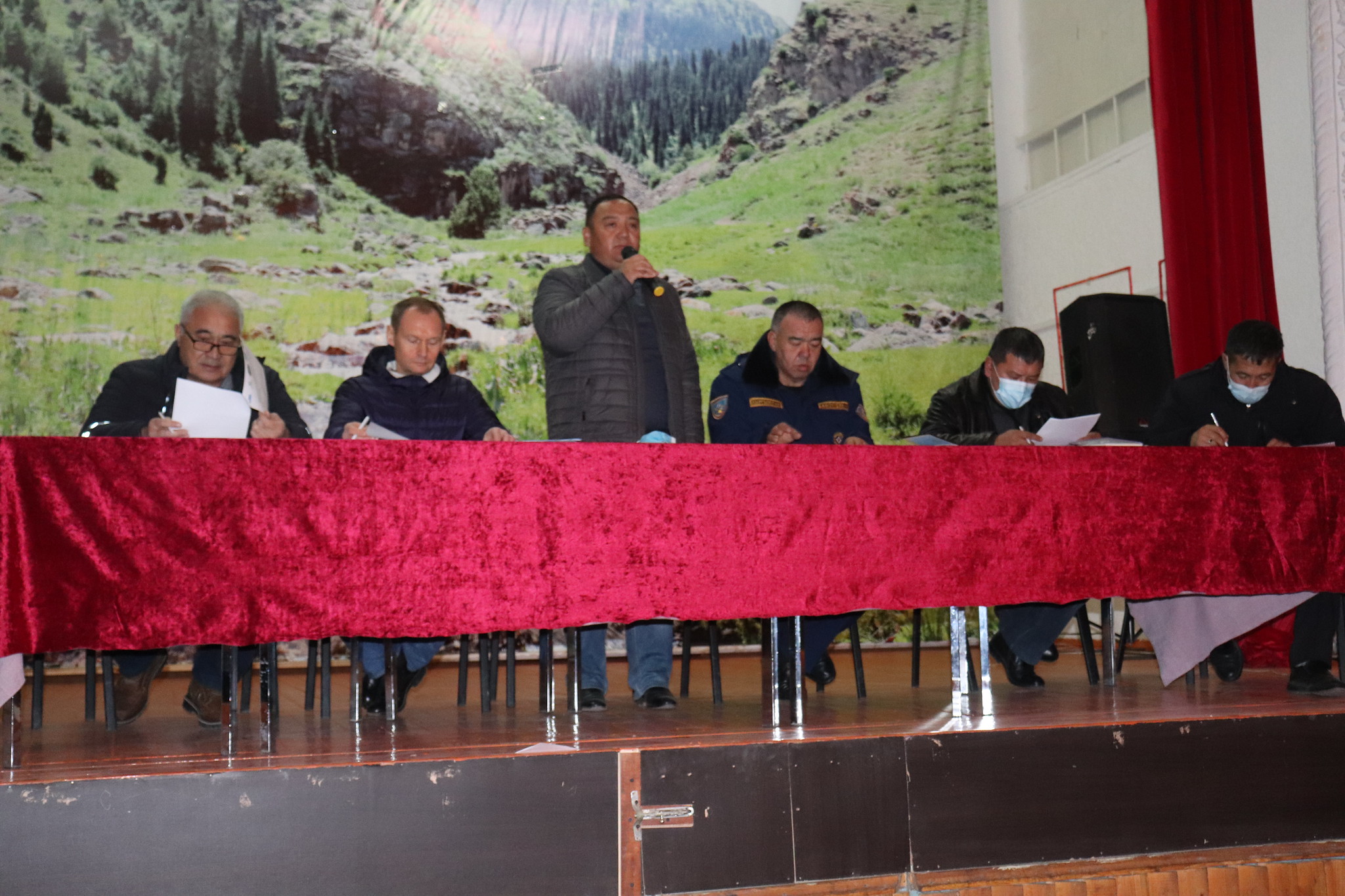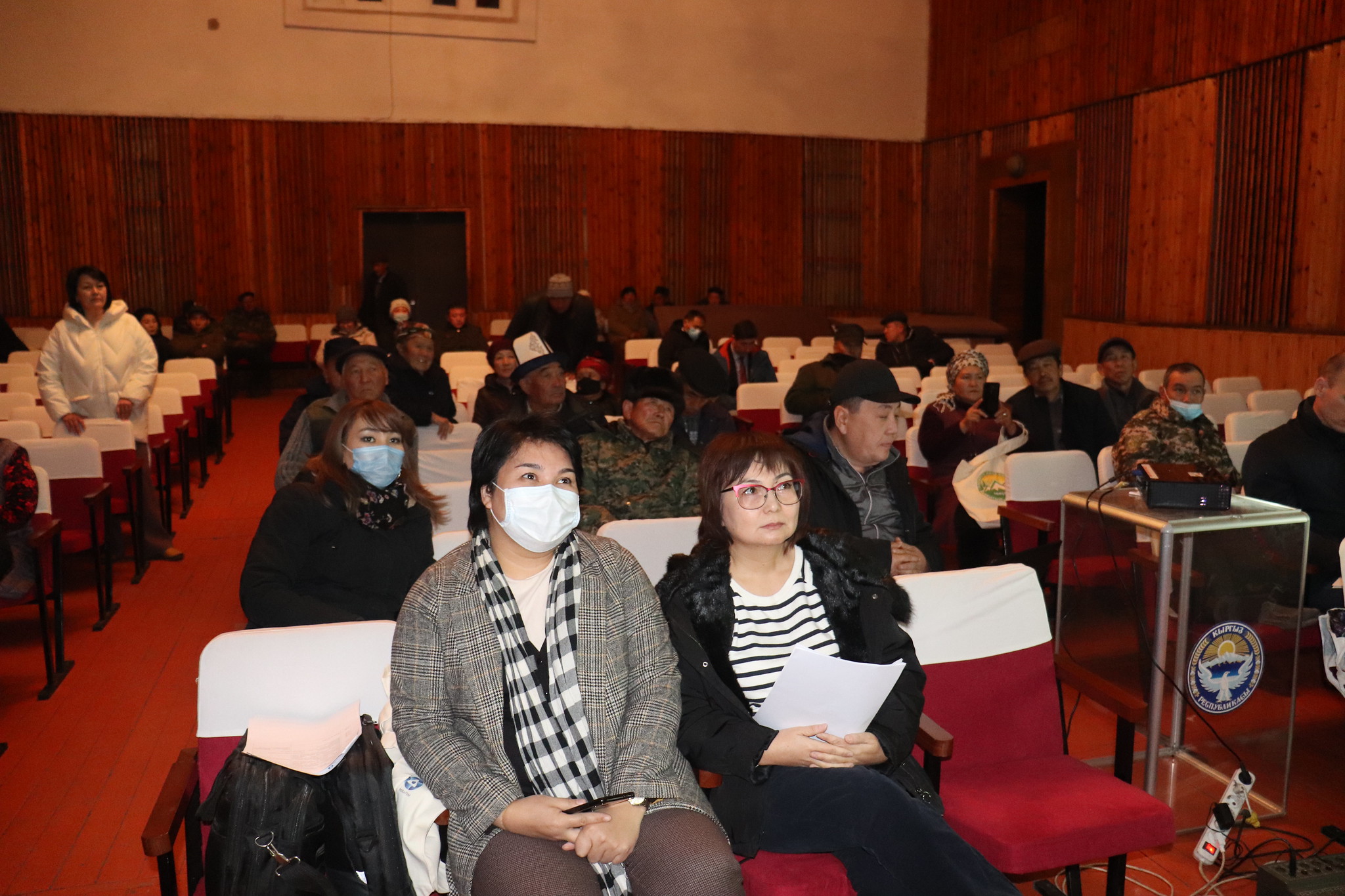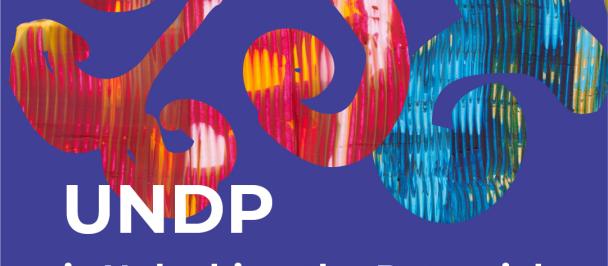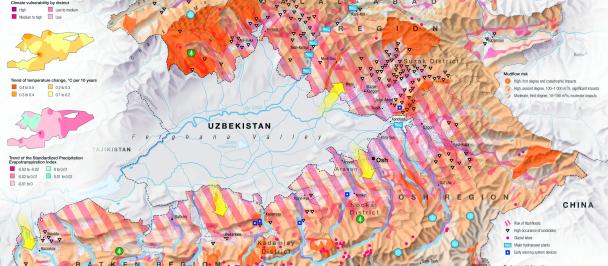Within the framework of the joint UNDP-OSCE regional project “Stakeholder Engagement for Uranium Legacy Remediation in Central Asia – Phase II” financed by the European Union, on November 11, 2021, a mission meeting of the Coordination group of Ministry of Emergency Situations of the Kyrgyz Republic, State Atomic Energy Corporation Rosatom, EBRD, OSCE and UNDP took place in Min-Kush village to ensure public discussion among the local population on progress in implementation of the above mentioned organisations' activities on radiation safety.
The meeting was attended by representatives of Rosatom State Atomic Energy Corporation, who briefed the residents of Min-Kush village on the practical implementation of uranium tailings remediation works. In particular, as Mr. Deryabin, a representative of Rosatom, noted: "The most dangerous sites in Kyrgyzstan are Kadzhi-Sai and Min-Kush. In Kadzhi-Sai all the works have been completed. In Min-Kush, the key is to rehabilitate the area around the tailings dams and special attention is being paid to radiation monitoring of soil, air and water as well as radiation hygiene to ensure safe transport.
To raise local awareness and understanding of radiation risks during the remediation of uranium sites, OSCE is implementing activities aimed at broadly involving local communities regarding radiation safety issues. Together with the Aarhus Centre in Osh and the Public Environmental Information Centres in Min-Kush, Shekaftar and Mailuu-Suu, information and educational campaigns are regularly conducted for the local population with the involvement of young people. Methodological and visual information materials on environmental and radiation safety are distributed to the local population.
From UNDP, a comprehensive awareness-raising campaign is accompanied by the implementation of small socio-economic grants with the involvement of civil society. Following an open tender, seven NGOs are currently activating local communities such as Min-Kush, Orlovka, Ak-Tyuz, Mailuu-Suu, Shekaftar and Sumsar to create a sense of ownership in the management of former uranium legacy sites, help communities develop alternative livelihoods and reduce the potential for negative local impacts of uranium tailings.
About the project
The objective of the regional project “Stakeholder Engagement for Uranium Legacy Remediation in Central Asia – Phase II” funded by the European Union, aims to reduce the risk of negative impacts of uranium tailings on people, livelihoods and the environment through awareness-raising and supporting gender- and risk-sensitive social solutions at uranium legacy sites at the local community level in Tajikistan, Kyrgyzstan and Uzbekistan. The project, with the aim of promoting civil society involvement and participation in the management of former uranium sites, focuses on public awareness raising and implementation of small grants.

 Locations
Locations